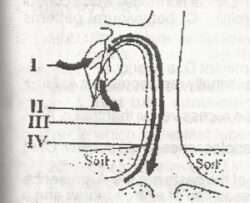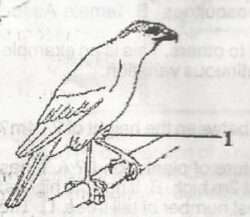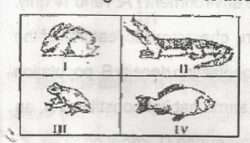Jamb Biology exam questions and answers for free for all Jamb candidates are now available. The Jamb biology exam questions are now trending online, you can use them for guidelines to study.
Jamb exam questions are logical in the sense that all the answers option look alike or exactly which made it so confusing and make many candidates fail
Jamb Biology exam questions are not hard or difficult, if you can use a sample of our Jamb Biology exam questions and answers available here for guides you will pass.
If you have not still covered the 2023 Jamb Biology syllabus kindly do because Jamb we set questions from the syllabus. You only need to read using the JAMB Biology syllabus as a guide to know the JAMB topics to cover before the Jamb exam day.
Having said that, let’s quickly go to Jamb Biology questions and answers. Use them to prepare for the JAMB mock and examination.
Jamb Biology Questions and Answers For All Jamb Candidates
1. The lowest level of organization in living organisms is
A. organ
B. cell
C. system
D. tissue
Correct Answer: B
2. Which of the following is the most complex according to their cellular level of organization?
A. Heart
B. Hair
C. Euglena
D. Hydra
Correct Answer: A
3. Which of the following characterizes a mature plant cell?
A the nucleus is pushed to the centre of the cell
B the cell wall is made up of cellulose
C the nucleus is small and irregular in shape
D the cytoplasm fills up the entire cell space
Correct Answer: B
4. Which of the following is NOT a function of the nucleus of a cell?
A it translates genetic information for the manufacture of proteins
B it stores and carries hereditary information
C it is reservoir of energy for the cell
D it controls the life processes of the cell
Correct Answer: C
5. The dominant phase in the life cycle of a fern is the?
A prothallus
B sporophyte
C antheridium
D gametophyte
Correct Answer: B
6. In bryophytes, sex organs are produced in the
A. protonema
B. sporophyte
C. gametophyte
D. rhizoid
Correct Answer: C
7. Which of the following is true of the transverse section of a dicot system?
A The xylem is more interiorly located than the phloem
B the cambium lies between the cortex and the vascular bundles
C the vascular bundles are randomly scattered within the cortex
D the epidermis is completely encircled by the cortex
Correct Answer: A
8. When the mixture of a food substance and Benedict’s solution was warmed, the solution changed from blue to black-red. This indicates the presence of
A reducing sugar
B fatty acid
C sucrose
D amino acid
Correct Answer: A
9. Which of the following is an arboreal organism?
A. Elephant
B. Fish
C. Antelope
D. Bird
Correct Answer: D
10. i2/1, c0/0, pm3/2, m3/3. The general formula above represent that of
A. an omnivore
B. a detritus feeder
C. a carnivore
D. a herbivore
Correct Answer: D
11. The primary structure responsible for pumping blood for circulation through the mammalian circulatory system is the
A veins
B right auricle
C arteries
D left ventricle
Correct Answer: D
12. Mycorrhizae promote plant growth by
A. Absorbing inorganic ions from the soil
B protecting it from infection
C helping it to utilize atmospheric nitrogen
D serving as a growth regulator
Correct Answer: D
13. In vascular plants, the sieve tubes and companion cells are present in the
A. cambium
B. cortex
C. xylem
D. phloem
Correct Answer: D
14. The stomata of leaves are similar in function to the
A. pharynx of humans
B. scales of fish
C. spiracle of insects
D. trachea of toads
Correct Answer: C
15. The blood component that has the greatest affinity for oxygen is the
A lymphocytes
B leucocytes
C erythrocytes
D thrombocytes
Correct Answer: C
16. The two halves of the pelvic girdle are joined together at the
A public symphysis
B ilium
C pubis
D obturator foramen
Correct Answer: A
17. The use of moist skin for respiration in amphibians is known as
A. cellular respiration
B. cutaneous respiration
C. buccal respiration
D. pulmonary respiration
Correct Answer: B
18.
I. Adoption of appropriate nocturnal habits
ll. Burrowing
lll. Adjusting their internal body temperature.
IV Possession of many sweat pores.
Which of the above are ways in which desert animals adapt to extreme heat of the environment?
A I and IV only
B ll and lll only
C l and ll only
D l, ll and lll only
Correct Answer: B
20. The activity of an organism which affects the survival of another organism in the same habitat constitutes
A an edaphic factor
B an abiotic factor
C a biotic factor
D a physiographic factor
Correct Answer: C
21. Water in plants is removed as water vapour through the process of
A. diffusion
B. osmosis
C. evaporation
D. transpiration
Correct Answer: D
22. The protozoan plasmodium falciparum is transmitted by
A female Anopheles mosquitoes
B female Aedes mosquitoes
C female Culex mosquitoes
D Female blackfly
Correct Answer: A
23. Thyroxine and adrenalin are examples of hormones which control
A blood grouping
B tongue rolling
C behavioural patterns
D colour variation
Correct Answer: C
24. Alternation of generation is a feature shown in
A. mosses
B. fungi
C. grasses
D. conifers
Correct Answer: A
25. The chromosome number of a cell before and after the process of meiosis is conventionally represented as
A 2n → 2n
B n → n
C n → 2n
D 2n → n
Correct Answer: D
26. The main distinguishing features between the soldier termite and other members of the caste are the
A presence of wings, possession of a small head and large thorax
B presence of wings, possession of a large thorax and a small head
C absence of wings, possession of strong mandibles and a large head
D absence of wings,possession of big head and the absence of mandible
Correct Answer: C
27. Coordination and regulation of body activities in mammals are achieved by the
A. nerves and muscle
B. nerves and hormones
C. nerves only
D. hormones only
Correct Answer: B
28. The Cerebellum of the Brain controls
A. Reflex Action
B. Muscular Activity
C. Emotional Expressions
D. the Endocrine System
Correct Answer: B
29. The flippers of a whale and the fins of a fish are examples of
A divergent evolution
B coevolution
C continous variation
D convergent evolution
Correct Answer: D
30. If both parents are heterozygous for a trait, the probability that an offspring will be recessive for that trait is
A 1/2
B 3/4
C 1/4
D 1
Correct Answer: C
31. The part of the brain responsible for peristalsis is the
A. Olfactory Lobe
B. Medulla Oblongata
C. Hypothalamus
D. Thalamus
Correct Answer: B
31. The genetic make-up of an organism is described as
A. Allele
B. Chromosome
C. Phenotype
D. Genotype
Correct Answer: D
32. Use the diagram below to answer this question.The movement of material in the xylem and phloem tissues of the plant are represented by the arrows labelled.

A lll and IV respectively
B ll and l respectively
C l and ll respectively
D l and lll respectively
Correct Answer: A
33. Use the diagram above to answer this question.During photosynthesis, the arrow labelled ll represents the
A escape of mineral salts
B absorption of energy from the sun
C release of carbon (IV) oxide
D release of oxygen as a by-product
34. Use the diagram below to answer this question. Based on the shape and structure of the beak and feet, the bird represented is likely to feed mainly on

A flesh
B fruits
C seeds
D nectar
Correct Answer: A
35. Use the diagram below to answer this question. With respect to their decreasing dependence on aquatic conditions for reproduction, which of the following is the correct arrangement of the animals represented?

A l,IV,II and lll
B IV, lll, ll and l
C l, ll, IV and lll
D lll, ll, IV and l
Correct Answer: B
36. A severe and long dry season is a characteristic feature of
A. Sahel Savanna
B. Mangrove Swamps
C. Sudan Savanna
D. Guinea Savanna
Correct Answer: A
37. Which of the following is a nitrogen-fixing blue-green algae of soil?
A. Rhizobium
B. Nitrosomonas
C. Clostridium
D. Anabaena
Correct Answer: D
38. A constituent of the exhaust fumes from electricity-generating sets which causes serious pollution is
A. Carbon (II) Oxide
B. Water Vapour
C. Ozone
D. Carbon (IV) Oxide
Correct Answer: A
39. A pollutant that is mostly associated with acid rain is
A. Nitrogen (IV) Oxide
B. Ozone
C. Fluorine
D. Carbon (IV) Oxide
Correct Answer: A
40. When the adults have reached a certain degree of weakness, the process of binary fission is replaced by conjugation in
A. Paramecium
B. Euglena
C. Amoeba
D. Plasmodium
Correct Answer: B
Kindly bookmark this link below for you are going to need it
- Nigeria Universities that Accepts Second Choice in Jamb For Direct Entry
- Top Universities that Accept Low Jamb Scores of 150, 160, 170…
- Nigeria Universities that Accepts Second Choice in Jamb For Direct Entry
If you have been wondering where to get the best and latest Jamb news updates and guide about Jamb 2023, how to pass Jamb, a timetable for Jamb Day 1, Day 2 D3 e.t.c, free online and hardcopy Jamb past questions, and hot topics to read for Jamb, and Jamb CBT practice platform, then subscribe to the newsletter or join our Forum
If actually, this information on Jamb Biology questions and answers is awesome and useful to you please kindly share using via Facebook, WhatsApp, Twitter, and Google+

